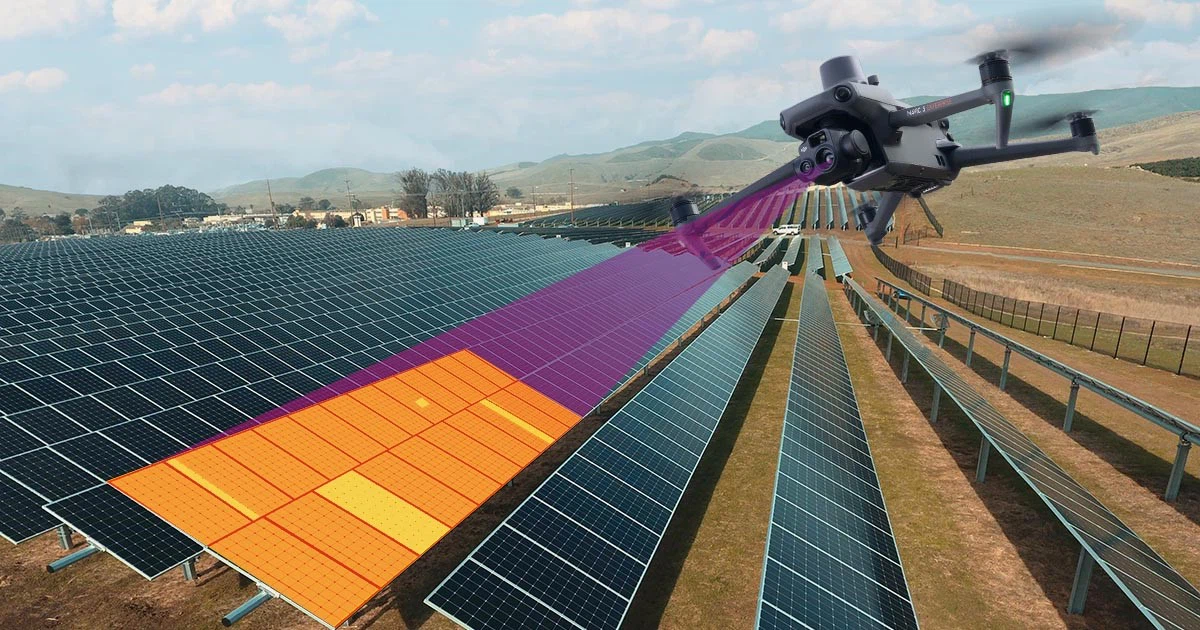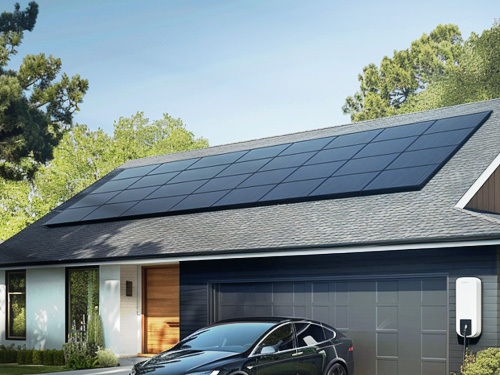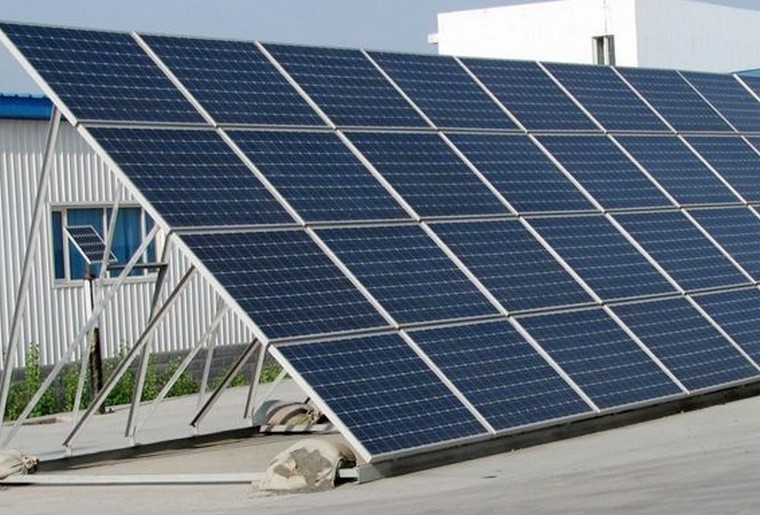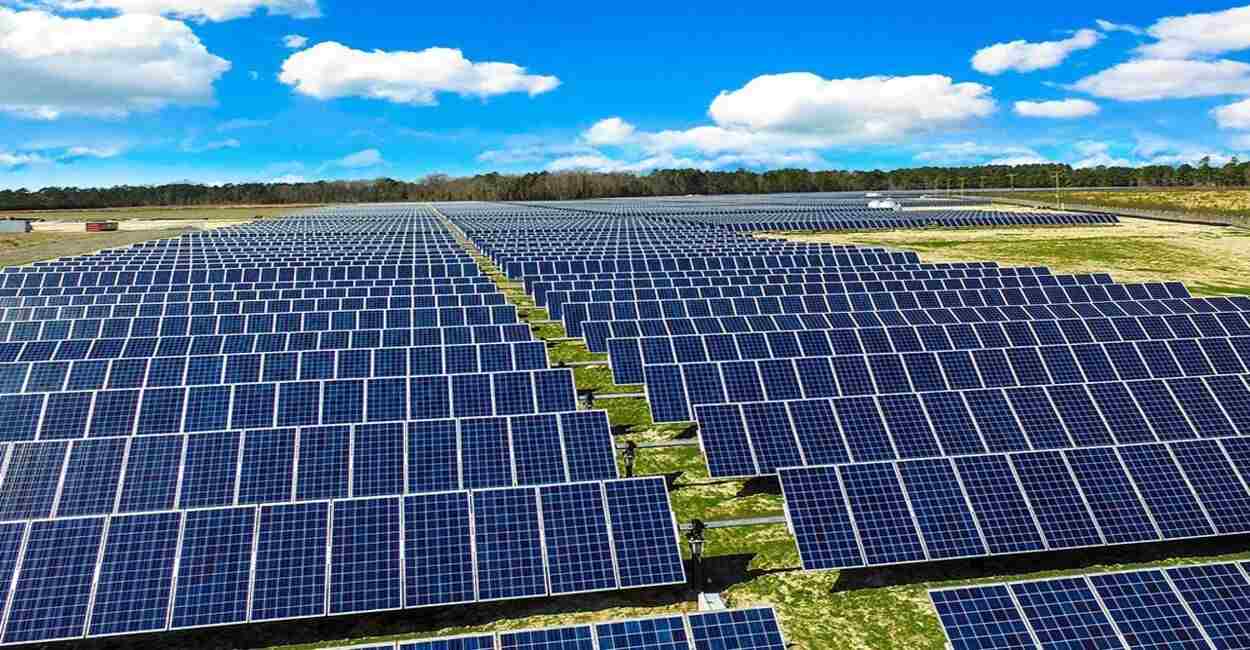Where integration is concerned, AC and DC are made easier by the use of modular solar panels. Each panel's DC power is allowed to make an individual conversion into AC with the help of microinverters. This reduces energy loss by as much as 4% when weighed against centralized systems, hence making installations both more efficient and more flexible, and highly scalable for residential or commercial expansion.
What Are Modular Panels?
The modular solar panels are the flexible generation parts, characterized by an independent unit structure able to work alone or combine proportionally according to needs to supply power in different scales and magnitudes. In contrast, this design adopts standardized component structures, enabling various configurations according to usage scenarios and load requirements, reaching very high scalability and customization.
Each panel is manufactured from modules and can produce about 400 watts of electricity. Ten panels, for example, would have a total installed capacity of 4 kW, which is the size of the average daytime electricity needs of an American household during ordinary residential usage. However, this type of modular architecture may also be used for larger projects. Commercial solar farms also take up this design. This means that, in a 1 MW solar farm, 2,500 units of panels with 400 watts of power each can be utilized. Expansion in capacity is possible by the simple addition of panel units for greater system flexibility and cost-effectiveness.
The advantages of modular panel design also extend into photovoltaic inverter technology. Each unit panel can convert DC to AC with the help of an independent inverter, which improves the general voltage matching efficiency of the system. Compared to the centralized inverter setup, the distributed configuration of modular inverters reduces energy losses caused by voltage mismatches. In this way, the power generation effectiveness is taken to another notch. It is this advantage in unit structure that secures great adaptability of modular solar systems in a number of situations.
AC vs. DC Basics
On the level of photovoltaic systems, the basic difference between AC and DC comes from the use and transmission of power. Photovoltaic solar cells generate DC power, while the majority of household appliances and power grids rely on AC power. This imbalance creates a dire need for an inverter, which converts DC power into AC in order to meet the demands of electricity in households. For instance, the household voltage in the United States is 120 volts of AC power, while the typical solar panel provides 24 to 48 volts of DC power that needs to be processed by an inverter in order for electricity to be used efficiently and safely. The common conversion efficiency of inverters is about 96-98%, with around 2-4% of energy loss during the conversion process. By adopting the modular design, for every unit module, a suitable inverter can be selected that would best cater to energy conversion efficiency and waste reduction.
Integration of DC and AC is more difficult in the case of large-scale photovoltaic systems. A large-scale solar farm with a capacity of 100 MW would lead to the loss of energy due to the complexity and length of cable wiring when centralized inverters are applied. In the modular design, each panel will be equipped with an independent inverter or a power optimizer that can directly convert the DC power of each panel into AC and feed it into the grid, thus reducing line losses while improving the overall system efficiency. This kind of modular integration method makes it more convenient for the expansion and maintenance of the systems, allowing the inverters to be replaced selectively according to the need, thus prolonging the system life.
Besides that, for modular panels, power optimizers can set the output voltage of each panel precisely and avoid the loss of power resulting from mismatched voltages. Power optimizers and distributed inverters can be deployed for large-scale applications in photovoltaic farms, offering immense improvement in the efficiency of the system, thus providing more flexibility to expand and maintain photovoltaic systems.
Why Choose Modular Design?
The essence of modular design has huge flexibility and efficiency for solar power systems, ranging from residential applications to large solar power plants. For example, in a typical 5 kW residential solar system, about 13 modular panels are needed, with each panel able to generate 400 watts of power. Where there is a future increase in the level of energy needed, additional panels can be added without needing to reconfigure the system, keeping the system flexible.
These benefits of modular design become even more significant on large projects. For large-power consumers, like data centers, for example, it can go for a modular solar system whereby the modular system can start with a 10 MW installation to meet the daily needs and increase capacity in 1 MW modular units as demand for load increases. In comparison to the whole process, modular design reduces the costs effectively, avoids the overbuilding risk, and allows flexible adjustments of the layout according to the actual needs for better system space utilization.
Combined with flexible scalability, with modules, it is easy to install. The module panels use standardized structural components for making it easier to install each panel and enable it to adapt to a wide variety of building structures. Similarly, for residential users, modular solar systems take less time to install; panel units can be added later if the demand so arises without rewiring, thereby reducing the retrofit cost by orders of magnitude. For commercial and industrial users, the distributed inverter configuration also simplifies later maintenance.
Ease of Installation
Compared with non-module ones, the whole installation process of modular solar panels is simplified, with their standard design making the connection between units more intuitive. In normal residential installation, every module panel will take about 30 minutes for installation, mounting, and wiring; this means that an entire installation will take approximately 6 hours in a 5 kW system with 13 panels. Labor costs are thereby greatly reduced, with manpower reduced by about 25% or so, compared with non-modular systems, which greatly raises installation efficiency.
Similarly, for commercial projects, the installation efficiency of modular panels will be even more pronounced. For example, if a solar power plant has a capacity of 1 MW, with each panel having a generation capacity of 400 watts, the workload of the installation team would be considerably reduced. If 10 installers can handle up to 20 panels a day, then they would finish the installation of a 1 MW in around 13 days, whereas it might take more than 20 days for any non-modular systems. This gets directly translated into reduced labor costs and faster deployment of projects.
The level of simplification in the installation not only reduces the costs but also makes the installation of the systems less complex. Modular design allows different panels to combine freely according to the requirements of the construction sites and realizes flexible adjustment in the system installation layout during construction. For example, it is very possible that there are obstacles or partially unavailable spaces; the installation team should flexibly adjust the layout to implement the panels for optimal sunlight exposure. This flexibility is even more important in complicated installation environments, such as rooftops with obstacles or tight spaces, where modular panels can avoid an obstacle and be directed based on the best sunlight angle, hence increasing the whole system's power generation efficiency.
Simplified AC/DC Integration
Modular solar panels simplify AC-to-DC integration at the panel level. Each panel can also be preassembled with microinverters or power optimizers that are able to independently convert DC to AC. In small residential systems, independent inverters on each panel independently convert the DC power into AC to meet household demands of electricity. At the same time, this approach allows system reliability since, in the case of malfunction of one panel, the remaining panels continue their normal functioning.
On large systems, such as commercial solar farms, modular panels utilize power optimizers to center the output voltage of every panel and minimize energy losses within the process of power transmission. For example, in a 1 MW power plant, power optimizers can supply DC power at every panel to a centralized inverter for conversion at efficient operation of the system. This can maintain the flexibility and scalability of a system with reduced power losses compared to traditional large-scale centralized inverter design, hence making modular panel power optimizer designs suited for various scale and type power needs.
It can also change the output voltage of every panel in real time to automatically adapt to changing external conditions, such as sunlight intensity or even temperature. This is an intelligent control that ensures the optimum efficiency of each panel by avoiding problems related to voltage mismatch seen in traditional centralized systems. This significantly enhances the power generation efficiency of the entire system.
Enhanced Flexibility
At the same time, modular solar panels can provide ample flexibility to keep up with changes in various installation environments and variations in energy demand. In an urban rooftop installation environment, this modular design will definitely handle space limitations without a hitch. For example, a typical 5 kW rooftop solar system requires about 300 square feet of space, whereas modular design allows the panels to skip obstacles like HVAC units and flexibly arrange in limited space. This flexible installation scheme is very important, especially for space-constrained building projects, and can help improve the overall sunlight reception efficiency of the system.
It is also highly useful in large-scale application scenarios such as agricultural fields, where modular panels can be scattered across open fields to optimize sunlight exposure and reduce any potential shading issues. A 10-acre solar farm has the potential to keep panels in optimal row spacing and tilt the panels to optimal sunlight angles, thus maximizing exposure to each panel. This, in turn, greatly enhances the efficiency of power generation. As an example, with a reasonable spacing layout, the overall capacity output of the panels can increase by about 15%, which is a significant efficiency improvement in large agricultural applications.
Modular systems can allow users to increase the capacity more flexibly in accordance with demand. For example, in small commercial projects, the initial installation could be only a 10 kW system to meet the current power needs. As the demand for electricity increases, the user can increase the panels in order to expand capacity to 30 kW or more. This capability for capacity expansion provides users with greater system control and is important to optimizing investment cost and reducing overall system risk.
Future-Ready Solutions
The modular solar panels lend rather well to the future energy management and smart grid technologies. For example, some of these modular systems are already fitted with smart sensors that monitor real-time performance of each panel and give users feedback for the detection of issues like shading or mechanical faults. These sensors further allow the detectors to give early warnings in case a panel malfunctions, hence improving efficiency in maintenance. This, in general, increases the efficiency of maintenance by about 20% since technicians can identify problematic panels without inspecting the entire system.
Since energy storage technology is still evolving, modular solar panels will be much better at integrating battery storage systems for flexible energy management. This is also modular, which means it can store extra electricity in a 10kWh battery pack for use at night or to deal with peak power usage, hence improving the availability and stability of power. Based on actual needs, the systems could integrate well into the smart grid technologies of the future for improved power distribution and use: this comes through load management of the grid. It is because such ease of adaptation for various needs allows one to assert that, even in the nearest perspective, modular solar systems will have a significant role to play in energy transitions.




